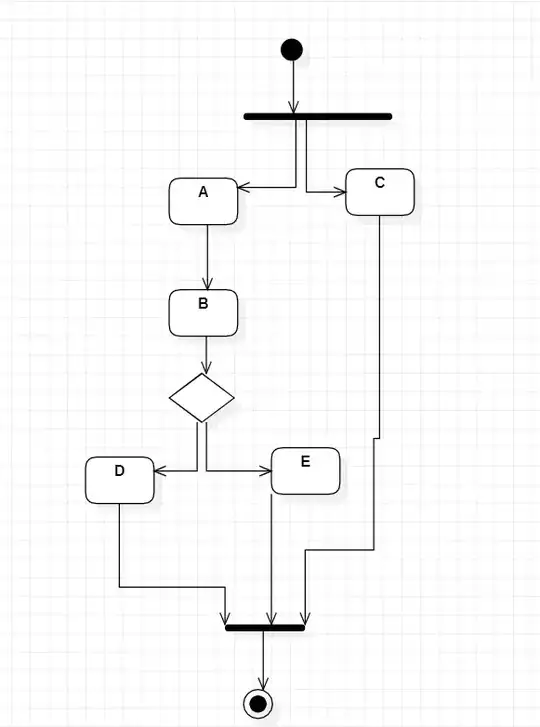Context: This is from a practice exam, and we aren't sure what the proper answer was
Question: What is a possible order of actions for this activity diagram?
Options:
A->B->D or A->B->C->D
A->B->C->D or A->B->C->D->E
A->B->C->D->E or C->A->B->E
A->B->C->D or C->A->B->E
Diagram is illegal
The first bar is called a FORK (where the flows after it happen simultaneously), the second bar is called a JOIN (where the flows join/sync up together) There is inconsistent behavior, C would need to happen at the same time as A->B->D or A->B->E and neither are options in the question.
A fellow student argues that it would be the 4th option because C just needs to happen at some point in the sequence (before the join).
What option do you think is right?
